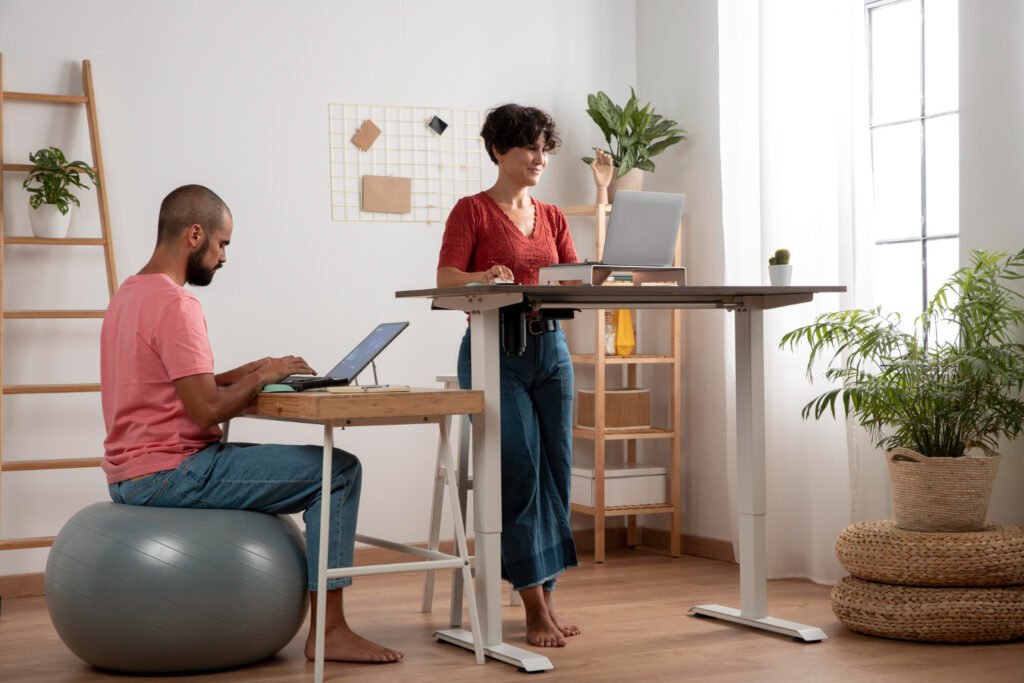Table of Contents
- Enhancing Mobility and Flexibility
- Material Innovations for Sustainability
- Noise Reduction and Ergonomics
- Smart Technology Integration
- Design Trends and Aesthetics
- Impact on Productivity and Safety
- Choosing the Right Casters for Your Space
- Conclusion
Modern workspaces demand versatility, efficiency, and smart design solutions. One component silently transforming the face of offices and collaborative environments is the caster wheel. While often overlooked, wheels for carts and other caster-equipped furniture are driving the evolution of workspace flexibility, supporting everything from agile meeting layouts to seamless movement of essential equipment.
Mobility isn’t just a luxury in contemporary office layouts—it’s a necessity for maximizing space, encouraging teamwork, and responding quickly to ever-changing business needs. Casters unlock this adaptability, helping transform static workstations into dynamic zones that foster creativity and productivity.
Enhancing Mobility and Flexibility
The adoption of casters essentially powers the drive towards agile, open-plan, and reconfigurable offices. Attaching caster wheels to desks, chairs, standing partitions, and storage units means any workspace can be easily adapted for group discussions, solo focus sessions, or hybrid meetings. According to WikiHow, knowing how to install or replace chair casters properly is key to ensuring smooth movement and long-lasting durability in high-use office environments. Flexible furniture solutions promote better collaboration and make it easier for businesses to evolve their workspace as teams grow or priorities shift.
This mobility is not only a boon for employee productivity but also helps facilities teams respond quickly to new health guidelines, changing team sizes, and the growing popularity of multipurpose office zones. Movable solutions allow spaces to be reimagined with minimal downtime and effort.

Material Innovations for Sustainability
Casters are now being made with sustainability in mind, reflecting the corporate world’s focus on eco-friendly infrastructure. New-generation caster wheels use recycled plastics and advanced polymers that are both robust and kinder to the environment. Some innovative models feature wheels molded from polylactic acid (PLA), a biodegradable compound derived from renewable sources such as corn starch—ideal for organizations seeking to reduce their carbon footprint.
These material advancements extend the life cycle of office equipment while supporting organizational sustainability goals. Companies need not compromise on quality; sustainable casters can carry substantial loads and withstand everyday wear and tear just as effectively as conventional alternatives.
Noise Reduction and Ergonomics
As noise levels and employee comfort gain attention in office design, casters, too, are being optimized for a quieter, more ergonomic experience. Soft-tread wheels and integrated shock absorbers effectively dampen vibrations and rolling sounds, which is critical in open-plan settings where acoustic comfort can make or break team focus.
Enhanced precision bearings in modern caster wheels ensure smooth, gentle movement, reducing physical strain and supporting employee health. These ergonomic upgrades contribute to healthier posture and less workplace fatigue, driving a culture of wellness in high-performance offices.
Smart Technology Integration
The application of smart technology to caster design is opening up new opportunities for workspace management. Some advanced casters are equipped with sensors that monitor factors such as load, movement frequency, and wheel temperature. The resulting analytics aid in predictive maintenance, minimizing downtime and the likelihood of breakdowns in mission-critical equipment.
Employers and facility managers can use this information to optimize furniture layouts, improve safety protocols, and intelligently track usage trends. As the Internet of Things (IoT) continues to expand in the workplace, smart casters are poised to play an increasingly important role in connected office ecosystems.
Design Trends and Aesthetics
Casters are receiving a design upgrade, becoming as much about visual appeal as practicality. Brands now offer minimalist styles with hidden wheels and vibrant, customizable finishes that match any office décor. This design attention transforms the caster from a utilitarian object into a subtle accent that complements modern interior schemes, proving that comfort, usability, and aesthetics can seamlessly coexist.
Impact on Productivity and Safety
Investing in quality casters brings substantial returns in productivity and workplace safety. Easy-rolling, durable wheels reduce physical effort when moving heavy equipment, lowering the risk of muscle strain or injury. The ability to effortlessly rearrange spaces fosters dynamic workflows, encourages cross-functional collaboration, and supports faster project turnarounds.
Safe, stable movement is no less critical: non-marking, lockable casters help prevent workplace accidents and protect expensive flooring. When thoughtfully chosen, casters become a key asset in maintaining a safe and efficient office environment.
Choosing the Right Casters for Your Space
Matching the right caster to each application is vital. Considerations include load capacity, flooring material, movement frequency, and desired quietness. For example, hard-tread casters are a strong fit for carpeted offices, while soft-tread models are best for hardwood or tile floors, helping prevent damage over time.
Engage with professional suppliers and consult expert reviews to make informed choices, ensuring that the selected casters align with your workspace’s unique needs and long-term goals. A well-chosen caster delivers years of silent, trouble-free performance while supporting ongoing workspace evolution.
Conclusion
As the foundation of flexible, productive, and attractive modern workspaces, casters and wheels have earned their place as essential design elements. From embracing sustainability and smart technologies to setting new standards for comfort and mobility, their impact will continue to shape the future of work environments, enabling organizations to thrive in an ever-changing landscape.

